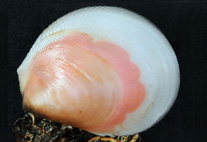Abstract
We analyze the morphological and genetic variability within and between seven species of Acesta and specimens recently collected in the northwest Atlantic using traditional morphological measurements, landmark-based geometric morphometrics, and the cytochrome oxidase subunit I (COI) gene sequences, with particular emphasis on North Atlantic species. Shell morphology and external shell appearance do not allow reliable distinction between the widely recognized northeastern Atlantic A. excavata and other northwest Atlantic species or populations of Acesta, with the exception of A. oophaga. Similarly, shape analysis reveals a wide variability within northeastern Atlantic A. excavata, and significant morphological overlap with A. bullisi from the Gulf of Mexico and A. rathbuni from the southwestern Pacific and South China Sea. Specimens from the northwestern and Mid-Atlantic display shell shapes marginally similar to that of A. excavata. These differences are at least partly related to anterior or posterior shifting of the shell body and to the opposite shifting of the hinge line/dorsal region and upper lunule. These morphological variations, along with the midline-width-ratio, explain much of the variability extracted by principal component analysis. Results from a mitochondrial DNA barcode approach (COI), however, suggest that the northwest Atlantic specimens belong to a new species for which we propose the name Acesta cryptadelphe sp. nov. Differences in larval shell sizes between northeastern and northwestern Atlantic specimens are consistent with this result.

